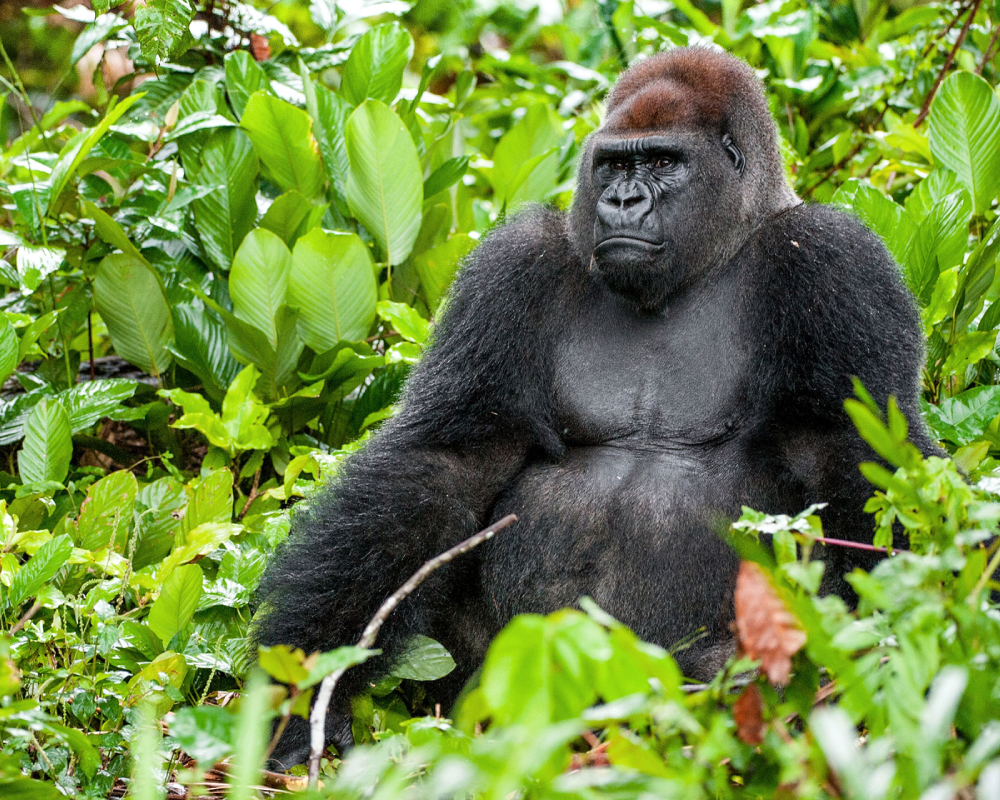In the dense forests of Central Africa, a majestic creature roams with a commanding presence, embodying strength, resilience, and a deep connection to its habitat. The Western Lowland Gorilla stands as one of the largest and most iconic primates on Earth, captivating researchers, conservationists, and nature enthusiasts alike. This article delves into the fascinating world of the Western Lowland Gorilla, exploring its biology, behavior, ecological significance, and the challenges it faces in an ever-changing world.
Biology and Habitat
The Western Lowland Gorilla, a subspecies of the Western Gorilla, is distinguished by its smaller size compared to its Eastern counterpart. Despite its bulk, with adult males weighing up to 400 pounds and standing up to 5.5 feet tall when upright, these gentle giants navigate their forest homes with surprising grace. Their coat, usually black or dark grey, provides excellent camouflage amidst the lush greenery of the tropical rainforests they inhabit across Equatorial Africa, spanning countries like Cameroon, Gabon, the Republic of Congo, and the Democratic Republic of Congo.
These primates are predominantly herbivorous, with a diet consisting mainly of fruits, leaves, shoots, and occasionally insects. Their broad molars and powerful jaws are adapted for processing tough vegetation, enabling them to extract vital nutrients from a variety of plant species. Their foraging activities play a crucial role in seed dispersal, shaping the diversity and composition of their forest ecosystems.

Social Structure and Behavior
Western Lowland Gorillas are highly social creatures, forming tight-knit family groups led by a dominant silverback—a mature male distinguished by the silver-gray hair on its back. These groups typically consist of several females, their offspring, and subordinate males. The silverback assumes the responsibility of protecting its family, mediating conflicts, and leading foraging expeditions across their home range, which can span several square miles of dense forest.
Communication within gorilla groups is rich and complex, relying on a combination of vocalizations, gestures, and body language. From chest-beating displays to affectionate grooming rituals, each interaction serves to reinforce social bonds and maintain cohesion within the group. These intricate social dynamics underscore the intelligence and emotional depth of Western Lowland Gorillas, challenging traditional notions of human exceptionalism.
Conservation Status and Threats
Despite their formidable stature, Western Lowland Gorillas face a myriad of threats that jeopardize their long-term survival. Habitat loss, primarily driven by deforestation, logging, and agricultural expansion, poses a significant risk to these primates, fragmenting their populations and disrupting vital corridors for movement and foraging. Moreover, the illegal wildlife trade remains a persistent threat, with gorillas falling victim to poaching for bushmeat, traditional medicine, and the exotic pet trade.
Additionally, infectious diseases, particularly the Ebola virus, have decimated gorilla populations in some regions, highlighting the interconnectedness between human and wildlife health. Climate change further exacerbates these challenges, altering the distribution of key food resources and increasing the frequency of extreme weather events, which can have cascading effects on gorilla habitats and populations.
Conservation Efforts and Hope for the Future
In the face of these daunting challenges, concerted efforts are underway to protect and conserve Western Lowland Gorillas and their habitats. Local and international organizations collaborate with governments, communities, and indigenous peoples to establish protected areas, implement anti-poaching measures, and promote sustainable land-use practices that balance conservation with socioeconomic development.
Community-based conservation initiatives empower local communities to become stewards of their natural heritage, fostering coexistence between humans and gorillas while providing alternative livelihoods that reduce dependence on forest resources. Education and ecotourism also play pivotal roles in raising awareness about the importance of gorilla conservation and generating revenue to support ongoing conservation efforts.
Advancements in technology, such as camera traps, GPS tracking devices, and genetic monitoring techniques, enable researchers to gain invaluable insights into gorilla ecology, behavior, and population dynamics, informing evidence-based conservation strategies. Collaborative research partnerships facilitate knowledge exchange and capacity-building initiatives, empowering local scientists and conservation practitioners to lead conservation efforts within their own communities.
Conclusion
The Western Lowland Gorilla stands as a symbol of resilience in the face of adversity, embodying the interconnectedness of all life forms and the urgent need for conservation action. By safeguarding these iconic primates and their habitats, we not only preserve Earth’s biodiversity but also uphold our moral obligation to protect the natural world for future generations. Through collective effort, innovation, and compassion, we can ensure that Western Lowland Gorillas continue to thrive in the wild, enriching our planet with their presence and inspiring awe and wonder for generations to come.









